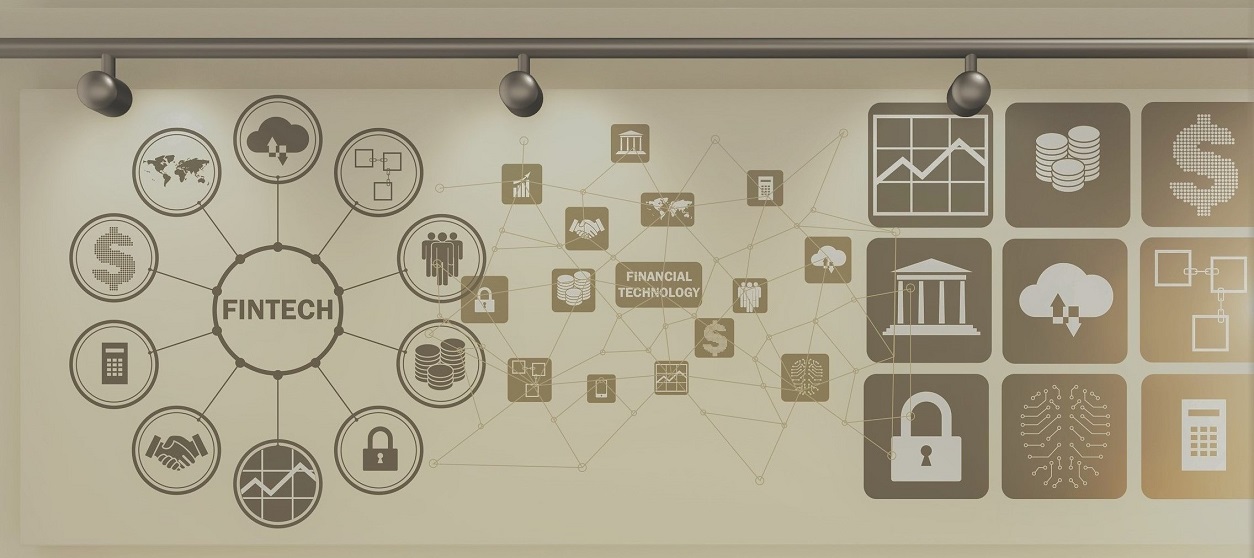The financial services industry has been traditionally conservative to the adoption of new technology especially in terms of disruptive technologies. During the past few years, this is rapidly changing as a result of the emergence of financial technology (FinTech) which is transforming financial organizations. The term “FinTech” stems from the mix of “financial services” and “information technology” and has been around for nearly three decades. However, its wider adoption and use date back in 2013-2014 when the industry started associating FinTech not only with the use of state-of-the-art technologies in the financial sector but rather with service disruption and novel business models as well. FinTech has nowadays a bright future: Thousands of FinTech startups are trying to develop and roll out innovative products and services for banks and other financial institutions while most financial organizations are aggressively investing in FinTech. According to a recent McKinsey & Co study, the number of FinTech startups in 2016 exceeded 2000 in comparison to approx 800 in 2015. Moreover, the vast majority of global banks and investment firms have already planned to increase their FinTech investments aiming at a 20% average return on their investments. In this context, it’s really important to understand what drives FinTech growth and also the different types of applications that comprise the FinTech landscape.
FinTech: Adoption Drivers
The surge of interest and the rising investments in FinTech are driven by the following factors:
- Consumer Behaviors and Digital lifestyles: The advent of mobile devices (smartphones, tablets) has changed the way citizens interact with banks. Nowadays, consumers are keen on accessing their banking services regardless of time and their location using their smartphones. This has given rise to a host of mobile applications for banking services including payments, portfolio management, location-aware transactions and more.
- Evolution of digital technologies: The evolution of digital technologies is another main driver of FinTech innovations. Leading edge digital technologies provide opportunities for creating novel and disruptive services. For example, the advent of BigData and Artificial Intelligence (AI) has opened new horizons in risk assessment and fraud detection. Likewise, Automatic Identification (AutoID) and Internet-of-Things (IoT) technologies enable new, secure and highly reliable forms of digital payments which are much more convenient than traditional methods. Recently, blockchains and cryptocurrencies are disrupting the financial sector based on novel, secure and decentralized models for payments, transfers of funds, investments and other forms of financial transactions. The importance of blockchain technologies for the financial sector is reflected on a recent study by PwC (PriceWaterHouseCoopers) which predicts that over 77% of financial services enterprises will adopt blockchains as a process or technology in the coming few years.
- Changing regulatory landscape: Financial organizations are nowadays faced with a quite unstable regulatory landscape. New regulations for financial transactions and protection of personal data are emerging which raises the regulatory risk and the compliance costs for financial institutions. FinTech applications can facilitate regulatory compliance which is one of the main reasons why financial institutions are increasingly investing in financial technology.
- FinTech as a vehicle of competitiveness: In recent years, financial technology is not simply improving existing products and services of financial organizations rather it also enables entirely new business models, which can boost the competitiveness of financial institutions and set them apart from competitors. For example, “mobile banks” with low transaction fees is nowadays a paradigm that is used to attract customers. Hence, FinTech’s ability to improve competitiveness is one of the main adoption drivers as well.
How FinTech Disrupts Financial Organizations
The last point of the previous list is probably the most important driver of the FinTech revolution. With financial technologies banks and other financial organizations are not marginally improving their existing services rather; they can do things differently as part of their digital transformation. This changes the nature of banking through disruptive changes in their culture, digital infrastructures, and business models. In particular:
- Cultural Changes: Traditionally, technology vendors were destined to facilitate financial organizations in their activities. In the FinTech era, technology vendors are expected to partner with financial institutions towards realizing disruptive innovation through providing entirely new solutions that set them apart from competitors.
- Infrastructure: Conventional financial institutions focus their technology activities on maintaining and upgrading their IT infrastructures. This is radically changing in FinTech, based on cloud-based models which are gradually replacing parts of the existing infrastructures and in some cases outsourcing some IT services. While this introduces some risks, if successful, it can yield very high returns.
- Business Models: FinTech enables a shift from conventional business models (e.g., cost-per-transaction, licensing fees) to modern business models that increase and diversify revenue streams. The latter business models include for example monetization based on advertisement and exploitation of data assets.
Taxonomy of FinTech Applications
FinTech’s disruptive power is already exploited in a number of different applications which cover virtually the entire financial sector. The most prominent FinTech applications can be classified into the following categories:
- Banking: FinTech is digitalizing many banking applications and transactions. In the consumer space, applications concern payments, management of saving accounts, credit card transactions, as well as secured credit applications (i.e. secured payment backed-up by collateral in some account). At the same time, there are various wholesale banking applications including liquidity management, underwriting, and wholesale payments applications.
- Insurance: Insurance applications represent a very important segment of FinTech applications which are commonly called “InsuranceTech”. The latter applications include personal insurance applications (e.g., motor, home, and health insurance) as well as wholesale applications (e.g., risk management, disaster management). Moreover, there are liquidity management applications in both consumer and business contexts.
- Asset Management: There are also several FinTech applications for asset management. Typical examples include advanced analytics applications for private wealth recommendations, returns calculation, investment suggestions and more.
- Capital Markets: Capital markets applications for FinTech including data-intensive systems for market research, risk management, compliance, and trading. These applications provide a lot of benefits, both in terms of intelligence and effectiveness but also in terms of convenience for the analysts.
Each of the above categories comprises many other subcategories, which are constantly growing in size and scope, given the proliferation of FinTech ideas and startups.
With over $23 billion of venture capital and growth equity during 2011-2014 and $12.2 billion of investments in 2014 alone, FinTech represents the future of financial services. We hope that this post serves as a valuable assistant in understanding the emerging FinTech landscape.











Explore specialized solutions offered by high-risk merchant processors.
https://groups.google.com/g/diviashop/c/yngkoSq77z0
Discover the top high risk payment processing companies on this website, offering reliable solutions for high-risk businesses.
https://telegra.ph/Why-Set-Up-Your-Own-Stripe-Account-and-How-Diviashop-Can-Help-07-05